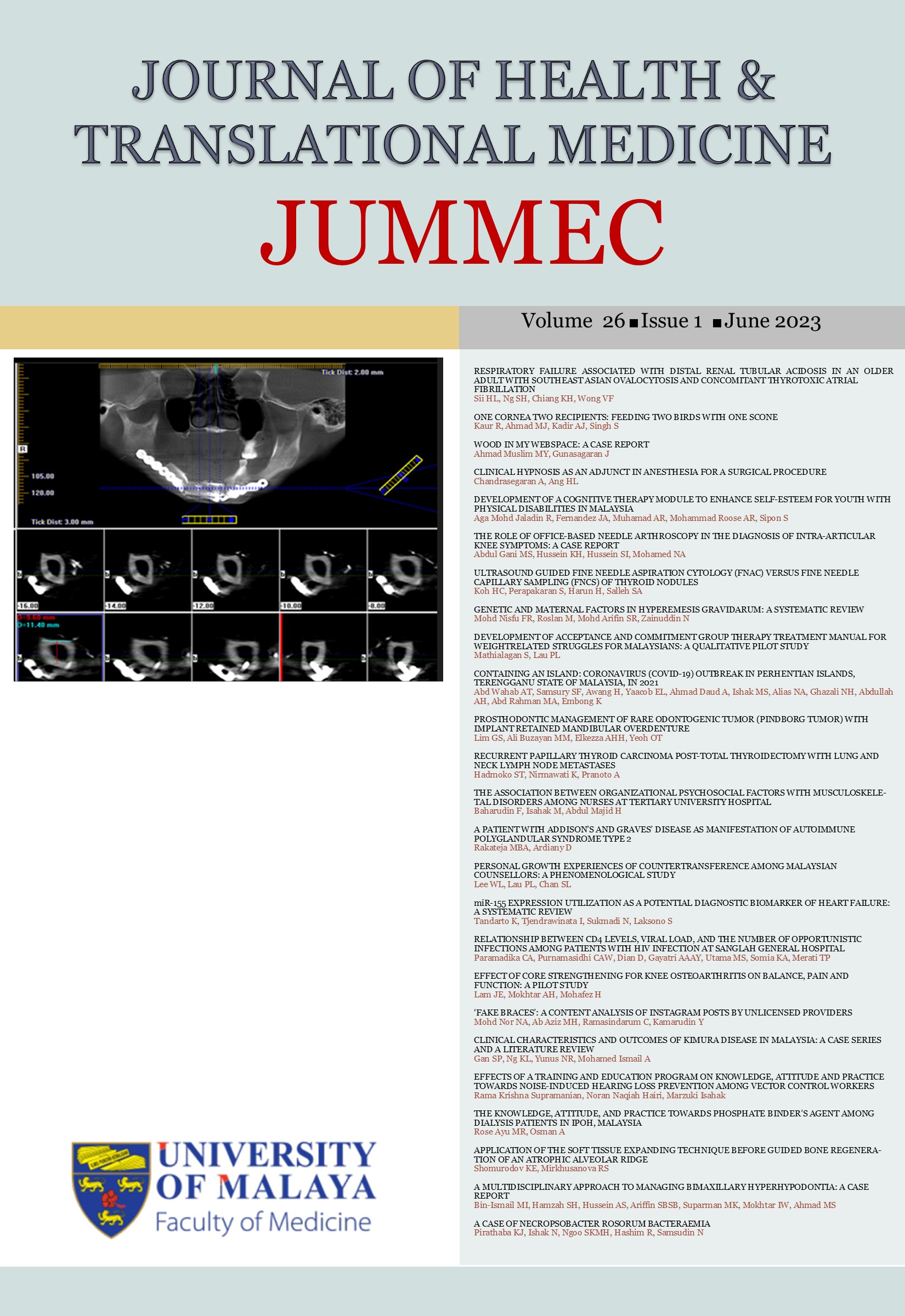‘FAKE BRACES’: A CONTENT ANALYSIS OF INSTAGRAM POSTS BY UNLICENSED PROVIDERS
Received 2023-01-19; Accepted 2023-02-15; Published 2023-03-25
DOI:
https://doi.org/10.22452/jummec.vol26no1.19Keywords:
Fake braces, Illegal dentistry, Instagram, Orthodontics, Social mediaAbstract
“Fake braces” is a term used to describe fixed orthodontic appliances that are fitted by unlicensed providers. This trend has raised public health concerns in certain countries with marketing typically undertaken on social media. We aimed to investigate the frequency and nature of Instagram posts by fake braces providers in Malaysia. Initial screening of Instagram accounts was performed using relevant hashtags (#fakebraces, #cheapbraces). Public Instagram accounts that fulfilled the inclusion criteria were assigned a code with posts evaluated over a one-month period. Data were coded and analysed using thematic analysis. Frequency distribution was calculated using Microsoft Excel. Thirty-eight Instagram accounts were analysed. 2831 images/videos were posted, receiving 7165 likes with videos being viewed 21, 918 times. The majority of posts were related to fake braces services (36.7%), followed by non-relevant posts (29.4%) and other services (14.5%). Services were provided mainly at home (44.7%) or offered both home and door-to-door services (23.7%). Although the posts on promotions were less frequent (5.4%), the displayed prices were low (RM150 to RM500), offering additional packages and discounts. Unlicensed providers have a variety of content to engage with social media audiences. Efforts should be made to increase public awareness, directing them towards reliable information about orthodontic services.
Downloads
Downloads
Published
Issue
Section
License
All authors agree that the article, if editorially accepted for publication, shall be licensed under the Creative Commons Attribution License 4.0 to allow others to freely access, copy and use research provided the author is correctly attributed, unless otherwise stated. All articles are available online without charge or other barriers to access. However, anyone wishing to reproduce large quantities of an article (250+) should inform the publisher. Any opinion expressed in the articles are those of the authors and do not reflect that of the University of Malaya, 50603 Kuala Lumpur, Malaysia.


